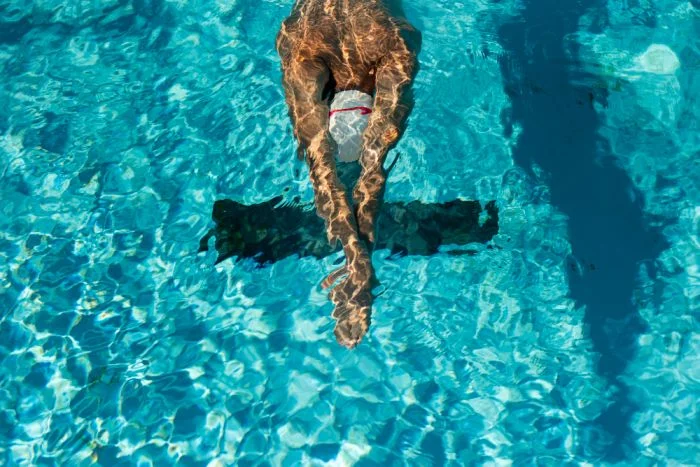Have you ever wondered why even the most graceful swimmers often battle nagging injuries that refuse to heal on their own?
As someone who grew up competing in school-level swim meets (and occasionally limping out of them), I quickly learned that swimming, while low-impact, is far from injury-proof. A few years ago, after struggling with persistent shoulder pain that traditional rest couldn’t fix, I found myself in a physiotherapy clinic — and it completely transformed not just my recovery, but also my performance.
In this article, we’ll dive deep into how physiotherapy helps with swimming injuries — with expert insights, real-world strategies, and practical advice you can start applying today. Whether you’re a competitive swimmer, a coach, or a weekend dipper, understanding the role of physiotherapy could make all the difference between sinking and thriving.
Why Swimming Injuries Happen in the First Place
Swimming is often hailed as a “safe” sport, thanks to its non-weight-bearing nature. But the repetitive movements — especially in strokes like freestyle and butterfly — can lead to overuse injuries.
According to a 2021 study published in the British Journal of Sports Medicine, over 40% of competitive swimmers report shoulder pain during their careers, often dubbed “Swimmer’s Shoulder”.
Common causes include:
- Poor technique (e.g., over-rotating the shoulders)
- Muscle imbalances
- Overtraining without sufficient rest
- Lack of proper warm-up and cool-down routines
- Structural issues, like tightness in the thoracic spine or weak rotator cuff muscles
And here’s the twist: because water cushions impact, injuries often develop slowly and silently, making early detection crucial.
How Physiotherapy Steps In: More Than Just Rehabilitation
When most people hear “physiotherapy,” they think of massage or stretching after an injury. But modern physiotherapy offers a far more proactive and comprehensive approach.
1. Precise Injury Diagnosis and Tailored Treatment Plans
Unlike a general physician who might simply advise rest, a skilled physiotherapist assesses:
- Muscle strength and flexibility
- Biomechanics of your stroke
- Joint stability
- Posture in and out of water
For instance, when I visited my physiotherapist for my aching shoulder, she immediately spotted a weakness in my scapular stabilisers — something no one else had noticed. My therapy plan wasn’t generic; it was crafted for me and my swimming style.
🔗 Related Resource: Chartered Society of Physiotherapy: Importance of Tailored Rehabilitation Plans
2. Targeted Strengthening and Mobility Work
Physiotherapists help swimmers develop strength where it truly matters — not just bulk muscles, but stabilising muscles around the shoulder blades, core, and hips.
Take for example:
- Rotator cuff strengthening to stabilise the shoulder joint
- Thoracic spine mobility exercises to improve stroke efficiency
- Core strengthening to maintain a streamlined position in water
According to Dr. Emily Foster, a renowned sports physiotherapist in London,
“Building functional strength around key joints prevents compensations that eventually cause injuries. In swimmers, the shoulder, spine, and hips must move harmoniously.”
3. Technique Correction and Stroke Analysis
One of the most powerful interventions my physiotherapist introduced was underwater video analysis. Watching myself swim from different angles revealed flaws in my technique — like overreaching during freestyle and dropping my elbow during pull-through.
Modern physiotherapists often work alongside swim coaches to correct these mechanical issues, ensuring a full-circle recovery.
4. Pain Management and Accelerated Healing
Swimmers often push through minor discomfort, risking more serious injuries. Physiotherapists use a combination of:
- Manual therapy
- Soft tissue release
- Dry needling (where appropriate)
- Electrotherapy (like TENS or ultrasound)
These therapies reduce pain and inflammation, speeding up the natural healing process without relying heavily on medication.
5. Injury Prevention and Long-Term Performance Enhancement
Perhaps the most underrated benefit: physiotherapy doesn’t just fix current injuries — it future-proofs your swimming career.
Through preventive exercises, mobility drills, and customised recovery protocols, swimmers learn how to:
- Recognise early warning signs
- Self-manage minor niggles
- Build resilience against future setbacks
💡 Pro Tip: Regular “physio MOTs” (once every 3-6 months) can help catch and correct small issues before they snowball into major injuries.
Real-World Examples: Physiotherapy in Action
Case Study 1: Olympic Swimmer Adam Peaty
Adam Peaty, one of Britain’s most decorated swimmers, has been open about the role of physiotherapy in his training regime. After suffering a minor shoulder injury before the Tokyo Olympics, he worked closely with his physiotherapist team to implement a strengthening and mobility programme, allowing him not just to recover — but also to win gold.
Case Study 2: My Personal Experience
During my recovery, my physio introduced resistance band exercises targeting my rotator cuff. Within four weeks, not only did my pain subside, but my stroke also felt smoother and more powerful. Returning to training, I swam personal bests in two strokes within the season — something I hadn’t achieved in years.
Practical Steps: How to Incorporate Physiotherapy into Your Swimming Routine
If you’re serious about swimming injury-free, here’s what you should do:
✅ 1. Find a Sports-Specialised Physiotherapist
Not all physiotherapists are created equal. Seek one who has experience with aquatic athletes or endurance sports.
✅ 2. Book an Assessment Before Problems Arise
Don’t wait for pain. A preventive assessment could spot technique flaws or strength deficits early.
✅ 3. Incorporate “Prehab” into Training
Add shoulder stability exercises, core workouts, and hip mobility drills into your dryland training.
✅ 4. Listen to Your Body
If a stroke starts feeling awkward or a joint feels persistently sore, get it checked immediately.
✅ 5. Advocate for an Integrated Approach
Work with your coach, trainer, and physiotherapist as a team — share notes, videos, and assessments to keep everyone aligned.
FAQs
Can physiotherapy help prevent shoulder injuries in swimmers?
Absolutely. Through targeted strengthening, technique correction, and flexibility work, physiotherapy significantly reduces the risk of shoulder injuries.
How long does it take for physiotherapy to heal a swimming injury?
It varies based on severity. Minor strains may improve in 2–4 weeks, while more serious overuse injuries could require 2–3 months of structured therapy.
Should beginner swimmers consider physiotherapy too?
Yes! Beginners often have poor stroke mechanics, which physiotherapists can correct early, preventing future problems.
Final Thoughts
Swimming might look effortless on the surface, but it demands extraordinary precision and strength behind the scenes. Physiotherapy isn’t just a tool for when things go wrong — it’s a powerful ally for keeping swimmers strong, balanced, and performing at their best.
If you’ve ever battled an annoying shoulder ache after a few laps or want to safeguard your future in the pool, booking an assessment with a physiotherapist could be the best stroke you take.
🏊♂️ Have you ever used physiotherapy to recover from or prevent a swimming injury? I’d love to hear your experience in the comments below!
External Link:




